This article was medically reviewed by Luba Lee, FNP-BC, MS. Luba Lee, FNP-BC is a Board-Certified Family Nurse Practitioner (FNP) and educator in Tennessee with over a decade of clinical experience. Luba has certifications in Pediatric Advanced Life Support (PALS), Emergency Medicine, Advanced Cardiac Life Support (ACLS), Team Building, and Critical Care Nursing. She received her Master of Science in Nursing (MSN) from the University of Tennessee in 2006.
This article has been viewed 107,262 times.
A dislocated finger can be very painful! Fortunately, they're usually not serious and are relatively easy for a doctor to put back into place. A finger can be dislocated any time it receives a direct impact in a direction it doesn't bend. This causes one of the joints in your finger to pop out of its socket. Most dislocated fingers are caused by sports accidents, workplace injuries, or car accidents. The best option is to visit your doctor as soon as you dislocate your finger, rather than attempting to fix it yourself.[1]
Steps
Treating a Dislocated Finger
-
1Notice if your injured finger is abnormally bent, painful, and won't move. A dislocated finger won't move because it's out of its joint. Similarly, the finger will likely be bent or pointed in an awkward way. You'll likely experience pain and swelling, and your finger may look pale. If the injury is severe, you may feel tingling and numbness around the area.[2]
- It's best to see a doctor if you think your finger is dislocated, especially if you experience a lot of pain and swelling. It's possible to experience both a dislocation and a broken bone at the same time, so getting a proper diagnosis is important.
-
2Remove any jewelry from your dislocated finger. As soon as your finger has popped out of joint, it may begin to swell. To prevent rings (or other jewelry) from being stuck on your finger and potentially cutting off blood flow, remove them as soon as possible.[3] Use a little lotion, dishwashing detergent, or spit to lubricate your finger if the rings are stuck.
- If you can't remove rings or other jewelry from your dislocated finger, a doctor may need to cut the jewelry off.
Advertisement -
3Apply ice to your dislocated finger to reduce swelling. Hold an ice pack or a frozen gel pack against your finger as soon as possible after the injury occurs.[4] Situate the ice in such a way that it doesn't put any further pressure on your dislocated finger, to avoid worsening the dislocation. Applying ice to your finger will prevent excessive swelling and should also help reduce the pain.
- If you don't have an ice pack or frozen gel pack, put 5–6 ice cubes in a damp washcloth and hold it against your injured finger.
-
4Elevate your injured hand above the level of your heart. Be sure to keep the ice on your dislocated finger, and raise it to at least shoulder height.[5] Keep your hand at this level until you can see a doctor. If possible, find something to prop your hand on so you don't exhaust your muscles. For example, in the car on the way to the doctor's office, prop your injured hand up on the back of a seat.
- If you don't elevate your hand, blood may pool in your dislocated finger. This could cause blood vessels to tear or external bleeding to worsen.
Seeing a Doctor
-
1Visit your doctor immediately after you dislocate your finger. Unlike when dealing with sprains (which require relatively little treatment), dislocations can be difficult to put back into place. Never try to force the joint back together, or you'll risk causing further damage to the finger. Instead, see your doctor as soon as you can.[6] If the dislocation isn't too bad, they may manipulate the joint back into place then and there.
- If it's nighttime or a weekend, go to an Urgent Care facility. You shouldn't need to visit an Emergency Room for a dislocated finger unless it's the only available option.
- Your doctor can realign your dislocated bone, and they will use local or oral anesthetic so it’s less painful.
-
2Receive an X-ray to determine the extent of your dislocation and rule out broken bones. If the doctor agrees that your finger is dislocated, they may recommend an X-ray so they can assess the extent of the damage. In most cases, they'll provide the X-ray in the office and you won't need to visit a specialist. Without an X-ray, the doctor won't know if the bones in your finger have been broken or if there are bone fragments in the joint.[7]
- Don't worry—if your doctor suggests an X-ray, it doesn't mean that your dislocation is particularly bad. Most likely, the doctor wants to see the position of the dislocation before they attempt to fix it.
-
3Request surgery if other methods won't relocate the joint. If your finger has been severely dislocated, it may need to be surgically repaired. Your doctor may also perform surgery if the bone and cartilage surrounding the dislocated joint have been damaged. The surgery is usually minimally invasive and you may be able to return home shortly after it's finished.[8]
- Since both the surgery and putting the joint back into place can be painful, the doctor may give you a local anesthetic to numb the sensation in your finger.
Allowing Your Finger to Recover
-
1Wear a padded finger splint for 3–6 weeks until the bone has healed. Once the doctor has relocated your finger (with or without surgery), they'll provide you with a padded finger splint to wear. The splint will wrap around your injured finger and hold it stiff, preventing further injury. Keep the splint on for as long as the doctor directs to allow the finger to heal fully.[9]
- Your doctor may give you “buddy tape” instead of a splint. Buddy tape wraps around your injured finger and 1 adjacent finger, and it keeps your finger nearly as stable as a splint would.
-
2Ice your injured finger for 30 minutes every 3-4 hours. Remove the splint from your relocated finger and hold an ice pack or frozen gel pack against it for at least 20 minutes. Do this every 3-4 hours, or at least 3 times every day. Continue to ice your finger for 2–3 days to allow the damaged finger to heal itself and to prevent complications caused by swelling.[10]
- Purchase an ice pack or gel pack at a local pharmacy or drug store.
-
3Elevate your hand as often as possible for the first 2-3 weeks. Elevating your injured hand will decrease inflammation and allow the damaged finger to heal quickly. So, as you go about your daily life, try to keep your hand elevated (chest height or above) as often as is realistically possible.[11] For example, prop your hand up on a few cushions when you're sitting on the couch, and rest it on several pillows as you lie in bed.
- Also try propping your hand up on a few books as you sit at a desk at your school or work.
-
4Perform any physical therapy exercises as your doctor directs. Your doctor may suggest, once your finger has healed for 3–4 weeks, that you try basic physical therapy to rebuild the muscles and ligaments in your finger. Basic moves will likely include stretches and repetitive finger curls.[12] In cases of a severe dislocation, your doctor may refer you to work with a licensed physical therapist.
- Following doctor's orders and doing the therapy as directed will help your finger heal quickly and with minimal lasting pain or damage.
-
5Talk to your doctor if the finger continues to hurt once the splint is off. It takes time for bones and ligaments to heal, and you can expect your finger to hurt for roughly 4–6 weeks. However, if it's still painful after this time has passed, talk to your doctor. Ask them what they'd recommend for the pain.[13]
- Your doctor may recommend NSAIDs or other drugs to combat pain and swelling. Before taking any medication, be sure to read the packaging and always follow the printed dosage instructions.
Expert Q&A
-
QuestionWhat if I don’t fix it?
 Luba Lee, FNP-BC, MSLuba Lee, FNP-BC is a Board-Certified Family Nurse Practitioner (FNP) and educator in Tennessee with over a decade of clinical experience. Luba has certifications in Pediatric Advanced Life Support (PALS), Emergency Medicine, Advanced Cardiac Life Support (ACLS), Team Building, and Critical Care Nursing. She received her Master of Science in Nursing (MSN) from the University of Tennessee in 2006.
Luba Lee, FNP-BC, MSLuba Lee, FNP-BC is a Board-Certified Family Nurse Practitioner (FNP) and educator in Tennessee with over a decade of clinical experience. Luba has certifications in Pediatric Advanced Life Support (PALS), Emergency Medicine, Advanced Cardiac Life Support (ACLS), Team Building, and Critical Care Nursing. She received her Master of Science in Nursing (MSN) from the University of Tennessee in 2006.
Board-Certified Family Nurse Practitioner If you don’t seek care, you might be left with a permanent disability. Delaying treatment makes it more difficult to treat and takes a longer time to heal
If you don’t seek care, you might be left with a permanent disability. Delaying treatment makes it more difficult to treat and takes a longer time to heal -
QuestionHow did I dislocate it in the first place?
 Luba Lee, FNP-BC, MSLuba Lee, FNP-BC is a Board-Certified Family Nurse Practitioner (FNP) and educator in Tennessee with over a decade of clinical experience. Luba has certifications in Pediatric Advanced Life Support (PALS), Emergency Medicine, Advanced Cardiac Life Support (ACLS), Team Building, and Critical Care Nursing. She received her Master of Science in Nursing (MSN) from the University of Tennessee in 2006.
Luba Lee, FNP-BC, MSLuba Lee, FNP-BC is a Board-Certified Family Nurse Practitioner (FNP) and educator in Tennessee with over a decade of clinical experience. Luba has certifications in Pediatric Advanced Life Support (PALS), Emergency Medicine, Advanced Cardiac Life Support (ACLS), Team Building, and Critical Care Nursing. She received her Master of Science in Nursing (MSN) from the University of Tennessee in 2006.
Board-Certified Family Nurse Practitioner Finger dislocation from its joint happens when a blunt or jamming force is applied or the finger is forcefully hyperextended. These can happen during sports, such as basketball, volleyball, football, or other activities. Also, falling on an outstretched hand can cause dislocations.
Finger dislocation from its joint happens when a blunt or jamming force is applied or the finger is forcefully hyperextended. These can happen during sports, such as basketball, volleyball, football, or other activities. Also, falling on an outstretched hand can cause dislocations.
References
- ↑ https://www.emedicinehealth.com/finger_dislocation/article_em.htm
- ↑ https://www.emedicinehealth.com/finger_dislocation/article_em.htm#what_are_symptoms_and_signs_of_a_finger_dislocation
- ↑ https://www.emedicinehealth.com/finger_dislocation/article_em.htm
- ↑ https://www.emedicinehealth.com/finger_dislocation/article_em.htm
- ↑ https://www.emedicinehealth.com/finger_dislocation/article_em.htm
- ↑ https://www.drugs.com/health-guide/finger-dislocation.html
- ↑ https://www.verywellhealth.com/sprained-finger-2549470
- ↑ https://www.verywellhealth.com/sprained-finger-2549470
- ↑ https://www.drugs.com/health-guide/finger-dislocation.html
- ↑ https://www.emedicinehealth.com/finger_dislocation/article_em.htm#when_should_patients_seek_follow-up_treatment_for_a_finger_dislocation
- ↑ https://www.emedicinehealth.com/finger_dislocation/article_em.htm
- ↑ https://www.emedicinehealth.com/finger_dislocation/article_em.htm
- ↑ https://www.verywellhealth.com/sprained-finger-2549470
- ↑ https://www.verywellhealth.com/sprained-finger-2549470
- ↑ https://www.emedicinehealth.com/finger_dislocation/article_em.htm
About This Article
A dislocated finger can be difficult to put back into place, so see a doctor as soon as possible. You’ll know it’s dislocated if your finger is bent in an awkward way, is painful and swollen, or you aren’t able to move it. The doctor will likely take an X-ray to determine if any of your fingers are broken. Then, they’ll either gently pop your finger back into place, or suggest surgery if the dislocation is more serious. While you’re waiting to see the doctor, there are a few things you can do to relieve your pain. Apply an ice pack against your fingers to reduce swelling. You can also raise your injured arm above the level of your heart, which will reduce pressure on your hand. To learn how to care for your finger after you’ve been treated, read more from our Medical co-author.
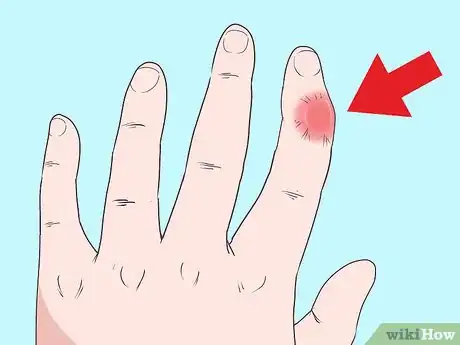
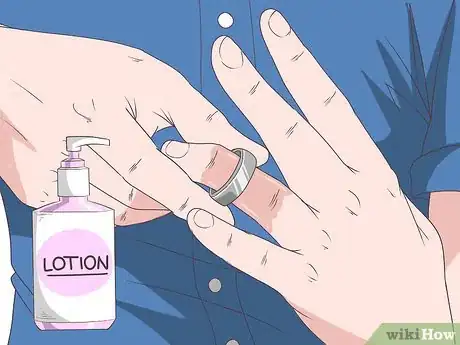
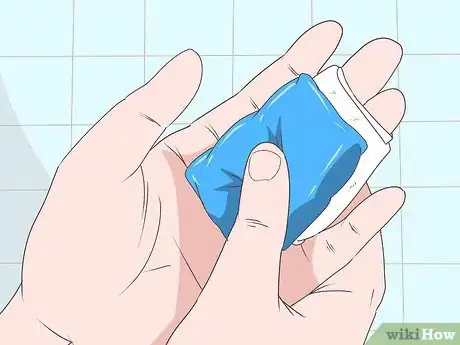
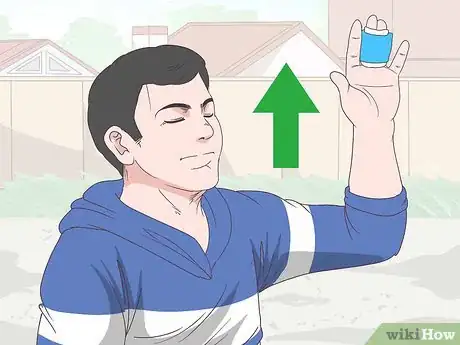
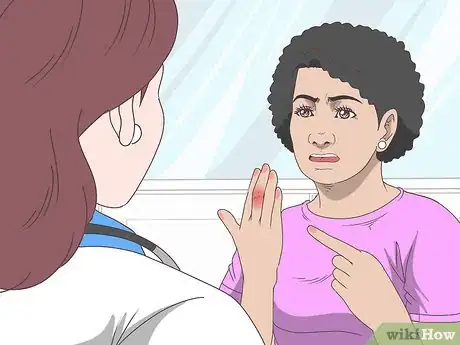
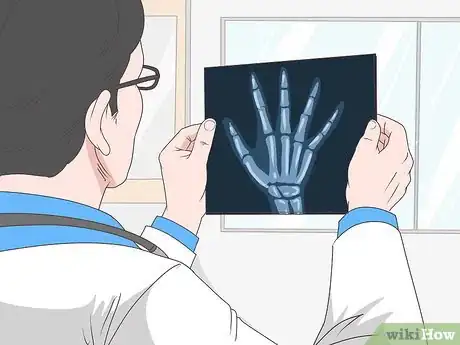
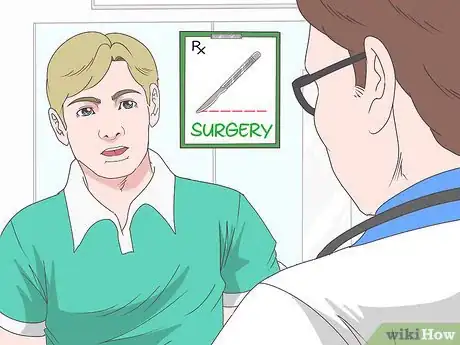

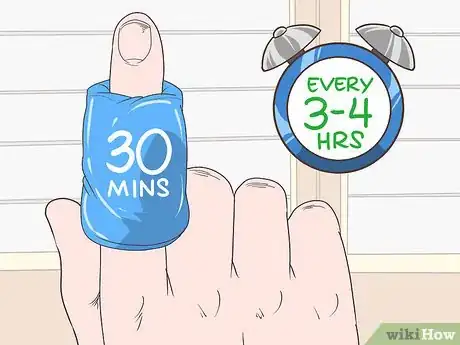
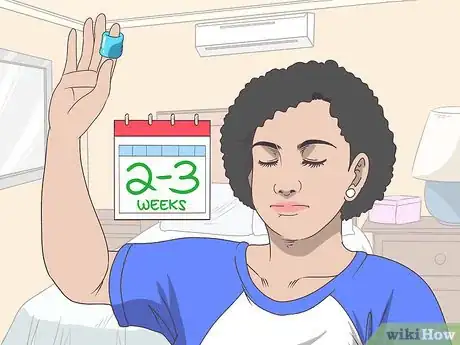


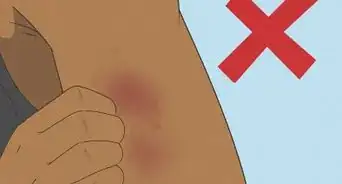
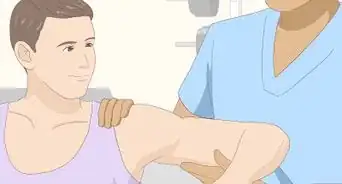


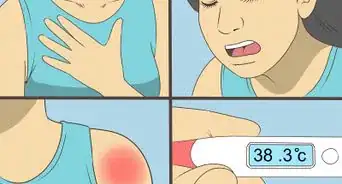
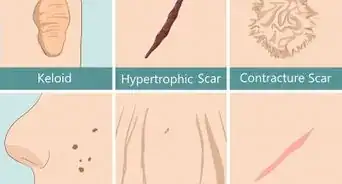

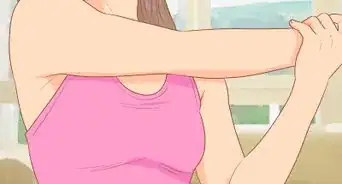

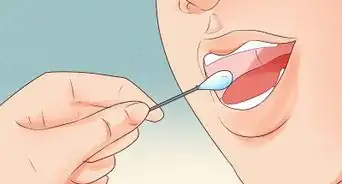
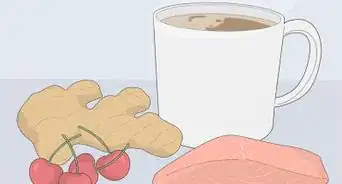
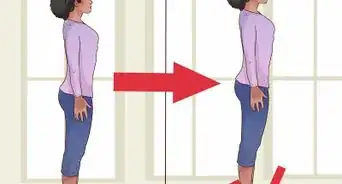








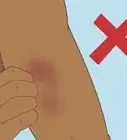
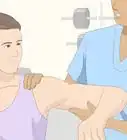
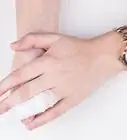





































Medical Disclaimer
The content of this article is not intended to be a substitute for professional medical advice, examination, diagnosis, or treatment. You should always contact your doctor or other qualified healthcare professional before starting, changing, or stopping any kind of health treatment.
Read More...